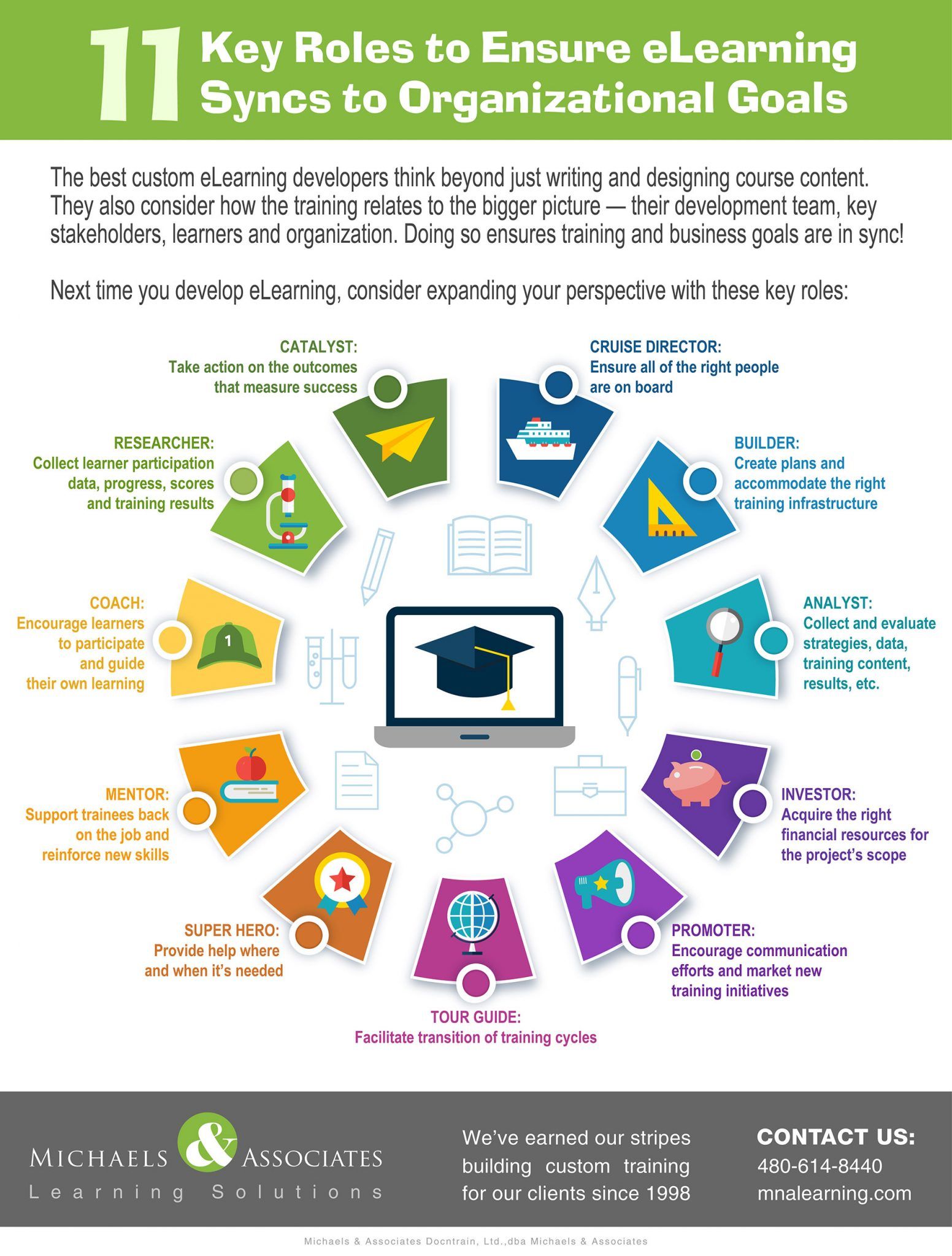
11 Key Roles for Corporate E-Learning Implementations
When 1,000s of training hours are at stake, a well-defined team is needed to ensure a successful project.
Creating or updating an e-learning program with just a few courses takes quite a bit of time. In fact, it can take months.
Now imagine a huge corporation that decides they too want to implement (or update) their existing learning program…
It can take years!
That is not an exaggeration. I have experience working on large-scale learning program implementations at major companies like 3M and Dow Chemical. These projects went on for years, to the point where the teams involved would end up updating some of the e-learning content that they created just a couple years prior.
Ultimately the success of the project came done to one thing: the team in place. If there weren’t enough resources then the people working on the project ended up wearing too many hats and the end-result suffered.
The most successful implementations not only have ample resources, but these resources have clearly defined roles and responsibilities all working towards the same goal.
Now in a perfect world every e-learning project would have more than enough staff to implement it, but we don’t live in a perfect world. Organizations look for ways to cut costs and often the training & development segment of business is often the first place that these cuts are realized. The result is that some employees take on multiple roles for the project. To a point this is fine (two roles is generally okay), but anything beyond this and the quality will begin to suffer.
The above infographic outlines the 11 suggested roles that are needed for a successful e-learning project. I see this as a perfect world scenario. Most of the past projects I was involved with would combine these roles, not because they wanted to but because he client required it due to budget constraints. For example, the Analyst and the Builder are often merged.
Again, combining roles is not a bad thing – actually it is pretty common. What is important to remember is that having clearly defined roles & responsibilities is critical when it comes to corporate e-learning projects. It creates structure and organization, both of which are essential when dealing with thousands of hours of training and employees.

Justin Ferriman
@LearnDashLMS







